Tens of thousands of Indigenous children are in government care across Canada today, taken from their parents.
We don’t know the exact number, because each province and territory collects their own data and there is no national database.
But based on available data, Indigenous children are anywhere from five to 12 times more likely to end up in care than non-Indigenous children.
Why? Mainly because their families are living in poverty.
Most Indigenous children end up in care because their parents are poor, says Nico Trocmé, director of McGill University’s School of Social Work and principal researcher for the Canadian Incidence Study of Reported Child Abuse and Neglect, a national database that collects information on the characteristics of kids and families who come to child welfare’s attention.
The main reason cited for taking Indigenous children away from their family and into government care is neglect. And neglect is another way to describe poverty, Trocmé said.
“I’ve certainly never seen any evidence from any of the research to indicate that there is something endemic to First Nations families that would explain a higher rate of placement. It has much more to do with the high rates of poverty and the difficult social and economic circumstances they’re living in.”
Children are apprehended because their families can’t afford adequate housing, food and clothing for their family.
In some cases, parents who lose custody temporarily are then evicted from subsidized housing intended for families, making it even harder to get their children back because they no longer have a suitable place to live.
Because of funding cuts, the last Canadian Incidence Study was in 2008, although another study is planned for later this year. Subsequent analysis of national data on child apprehension confirmed the initial findings, Trocmé said.
Researchers found First Nations families were twice as likely as non-Indigenous families to be investigated based on a suspicion of physical abuse.
“But for neglect they were eight times higher,” he said.
Child protection workers were more than four times more likely to launch investigations into First Nations’ families.
“And then as they worked their way through the system they’re even more likely to be open for ongoing services, more likely to go to court, and 12 times more likely to be placed in child welfare care,” Trocmé said. The data is not robust enough to be considered nationally representative, he added, but it’s the best Canada has until the next study is completed in 2019.
For First Nations kids living on reserve, child welfare services are usually provided by the province. But they’re mainly funded by the federal government. And until February, the federal government would only provide funding after children were taken into care, not to support families or take steps to head off child apprehension.
And it has been systematically discriminating against 163,000 First Nations children by refusing to fund services for them at the same rate as non-First Nations children, the Canadian Human Rights Tribunal ruled more than two years ago.
Aboriginal Affairs and Northern Development “does more than just ensure the provision of child and family services to First Nations, it controls the provision of those services through its funding mechanisms to the point where it negatively impacts children and families on reserve,” the ruling read.
“Instead of assessing the needs of First Nations children and families and using provincial legislation and standards as a reference to design an adequate program to address those needs, AANDC adopts an ad hoc approach to addressing needed changes to its program.”
The ruling was clear, but the government largely ignored it — despite five non-compliance orders from the tribunal. Following the fifth order this past January, the February budget included $1.4 billion over the next six years for Indigenous child welfare, on top of the $635 million over five years promised in 2016.
But the funding is far short of what’s actually needed to provide First Nations children with the same supports — educational, health and social services as their non-Indigenous peers, says Cindy Blackstock, executive director of the First Nations Child and Family Caring Society and the driving force behind the effort to take the Canadian government’s treatment of Indigenous children to the Canadian Human Rights Tribunal 11 years ago.
“I welcome those investments in the budget and I’m thankful to [Indigenous Services] Minister [Jane] Philpott for advocating for them but the reality is these kids are still getting underfunded in early childhood education, in education, in water,” she said.
“And you know I think all of us really have drunk the toxic potion of what I call incremental equality which is that we should be happy dealing with these inequalities one program at a time and one teaspoon at a time.”
It’s time governments treated Indigenous children the way they treat their non-Indigenous peers, she said.
Outcomes for kids placed in the child welfare system aren’t good. A national study from 2015 found almost 60 per cent of homeless youth surveyed had spent time in the child welfare system, while a B.C. study found just over a third of the kids in care had also been involved in the youth justice system. Kids in care were more likely to be involved with the justice system than to graduate from high school.
While there are no federal statistics, youth in care and receiving services from the children’s ministry in B.C. have alarming rates of death and injuries, with 120 youth dying in 2016 alone according to the provincial watchdog. It’s a number higher than the 104 deaths the ministry counted that year. The provincial Representative for Children and Youth’s office estimates they receive 200 critical injury and death reports for kids in care every month, roughly 85 of which are related to the care they received or failed to receive.
Deaths of Indigenous kids, including accidents and suicides, in for-profit group homes in B.C., Alberta and Ontario have also raised alarm in recent years.
The federal and B.C. governments have both committed to implementing the 94 Calls to Action of the Truth and Reconciliation Commission, the first five of which are about child welfare, as well as the United Nations Declaration on the Rights of Indigenous Peoples, which says that Indigenous people have the right to the shared raising of their own children.
After knowing for decades that too many Indigenous children were going into care; federal, provincial and territorial governments are starting to act. Budgets are increasing for on and off-reserve services and the focus — at least in theory — has shifted to supporting families rather than taking children into care.
But after 150 years of colonization through child apprehension, Indigenous groups are saying they want to run their own child welfare systems — and they want it now.
The issues don’t just affect children and families living on reserves. Even off-reserve Indigenous children — who include status and non-status First Nations, Inuit and Métis children — are being taken into care before families can access services or supports.
In Manitoba, where 90 per cent of the 11,000 children in care are Indigenous, First Nations mothers are losing their children within hours of birth.
And ironically, one of the factors workers use in assessing whether to apprehend a child is if the mother spent time in government care herself.
Manitoba uses a risk assessment tool checklist to determine whether children should be brought into care, a checklist that includes questions about parents’ past and current mental health and addictions issues. B.C. uses such a tool, too, a spokesperson for the Ministry of Children and Family Development confirmed with The Tyee via email.
“Ministry staff and service providers are trained in trauma-informed practice, including trauma caused by inter-generational issues such as those experienced by parents who have themselves been in the child welfare system or who were in residential schools,” they said.
With a few exceptions we will examine later in this series, all child welfare agencies in Canada, whether operated by settler or Indigenous governments, must follow the child welfare legislation of the province or territory they are in.
Banakonda Kennedy-Kish Bell, elder in residence at Wilfrid Laurier University’s faculty of social work, said this is “making us be part of a system that does not work for us, has never worked for us, has never had in mind, in goal, in purpose, working for us.”
Katrine Conroy, B.C. minister of children and family development, sees the system’s limitations. Current B.C. legislation prevents social workers from reaching out to First Nations community leaders to find help for families before they go into care, she notes. It’s a rule her ministry is trying to change through Bill 26 introduced last month, which makes amendments to the Child, Family and Community Service Act to allow the director of child welfare to decide if a nation should be contacted.
Critics, including the Representative for Children and Youth and several First Nations groups, say the proposed legislation was created without proper consultation with First Nations people and maintains the current paternalistic child welfare system.
As it stands the act currently requires every household taking in a child, whether they’re extended family or strangers, must have a separate bedroom for every child.
“Well, a grandma wanted to take her two grandsons, and she couldn’t because she didn’t have the spare room,” Conroy said, recalling a specific example she heard recently from a social worker.
“So the ministry got a couple of bunk beds and put them in the room with her and it’s perfect. It’s an interim measure, mum gets the support she needs so the boys can go back to mum. But that’s a way of thinking outside of the box, whereas a few years ago that wouldn’t have been an ‘appropriate placement.’”
Minister for less than a year, Conroy admits she was surprised by the extent of the overrepresentation of Indigenous kids in the province’s child welfare system when she took on the job last summer.
“I think a lot of people in the province don’t even understand the last residential school to close down was in 1996. I mean that’s in our history — it’s definitely in my history. So that’s recent. I think we need to talk about what’s happened, the issues with colonialism and the Sixties Scoop.”
While Blackstock is not fully satisfied with the federal government’s promised funding and commitments to child welfare reform, she does have hope.
Not just in the Indigenous youth she sees coming up today who, despite the odds stacked against them, are speaking out for other kids, youth and families in the system. But because of the non-Indigenous kids who started showing up to the Human Rights Tribunal hearings starting in 2009.
“I knew when they started to come and they continued to come in such numbers that we’d have to book the children in in shifts, that First Nations children would never be alone again,” she said.
“This struggle may continue for the next few years, but these kids will not have to rely on just a few of us. There will be a whole community of their peers who know what’s happening and are willing to stand up for fairness.”
Coming Wednesday: In part three, we share the views and experiences of Ashley Bach, who was taken into care at birth and raised by her adoptive parents half a country from her community.
This story was updated on May 15, 2018 at 11:30 a.m. to correct an error. ![]()
Read more: Indigenous, Rights + Justice, BC Politics, Housing





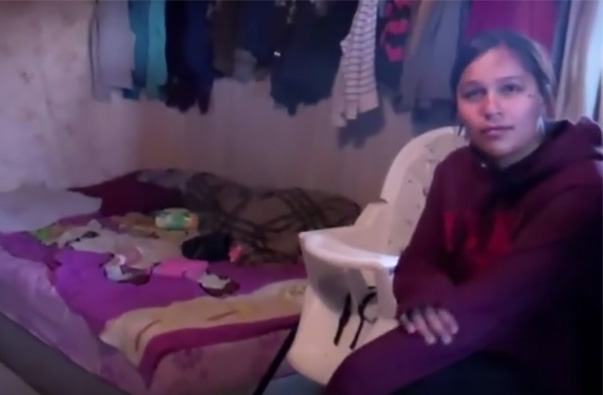

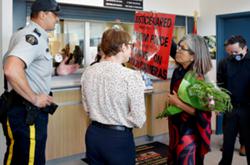
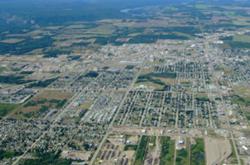

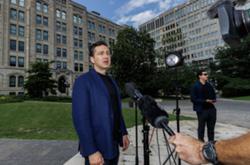

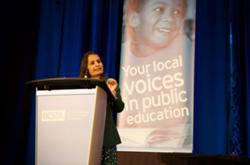
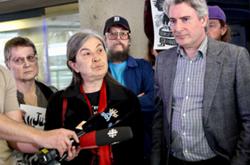

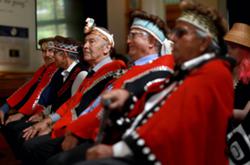
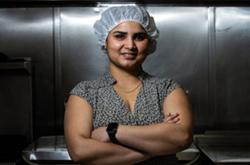
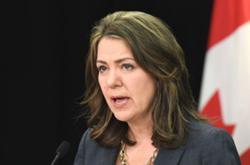
Tyee Commenting Guidelines
Comments that violate guidelines risk being deleted, and violations may result in a temporary or permanent user ban. Maintain the spirit of good conversation to stay in the discussion.
*Please note The Tyee is not a forum for spreading misinformation about COVID-19, denying its existence or minimizing its risk to public health.
Do:
Do not: